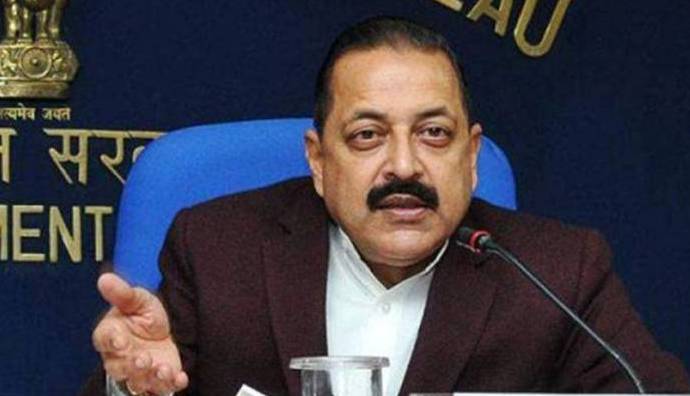Union Minister Dr Jitendra Singh says, IMD has been continuously improving weather prediction services in terms of accuracy, lead time and associated impact

Union Minister of State (Independent Charge) Science & Technology; Minister of State (Independent Charge) Earth Sciences; MoS PMO, Personnel, Public Grievances, Pensions, Atomic Energy and Space, Dr Jitendra Singh today said that India Meteorological Department (IMD) is effectively functioning in the country maintaining accurate weather forecasting services along with monitoring services for early detection of natural disasters. In a written reply to a question in the Lok Sabha, he said, during the past few years, IMD has been continuously improving weather prediction services in terms of accuracy, lead time and associated impact.
The Minister informed the Lok Sabha that IMD has taken various initiatives in recent years for improvement in dissemination of weather forecast and warning services based on latest tools and technologies. In 2020, IMD has launched seven of its services (Current Weather, Nowcast, City Forecast, Rainfall Information, Tourism Forecast, Warnings and Cyclone) with ‘UMANG’ mobile App for use by public.
Moreover, in 2020, IMD had developed mobile App ‘MAUSAM’ for weather forecasting, ‘Meghdoot’ for Agromet advisory dissemination and ‘Damini’ for lightning alert.
From November 2020 onwards, IMD started issuing a special bulletin related to winter weather systems (All India Multi-hazard Winter Warning Bulletin) which provide the details of colour coded warning for five days for the adverse weather elements, along with present weather scenario related to cold wave, cold day etc.
In the present scenario, India is second to none, in early warning services as well as in managing the disasters associated with Cyclones. India Meteorological Department has demonstrated its capability to provide early warning for Cyclones with high precision. With the help of such early warnings, the Government is able to mobilise evacuation operations in a timely manner, thereby saving lives & livelihood. The cyclone forecast accuracy has significantly improved in recent years as has been demonstrated during cyclones Phailin (2013), Hudhud (2014), Vardah (2016), Titli (2018), Fani & Bulbul (2019), Amphan, Nisarga & Nivar (2020) and Tauktae & Yaas (2021). During recent years, the loss of life has been drastically reduced being limited to double digit figure in the recent years.
Further, the Government of India has initiated the National Cyclone Risk Mitigation Project (NCRMP) with a view to address cyclone risks in the country. The overall objective of the Project is to undertake suitable structural and non-structural measures to mitigate the effects of cyclones in the coastal states and UTs of India.
IMD issues forecast & warnings for the weather elements for five days with an outlook for another two days as per usual practice. From National Weather Forecasting Centre (NWFC), IMD forecasts are given in sub-divisional scale whereas the Regional Weather Forecasting Centre (RWFC) and State Weather Forecasting Centre (SWFC) issue forecast and warning in district level and station level. Though the flood and drought warning are not the responsibilities of IMD, flood warning services of Central Water Commission (CWC) is supported by IMD, by providing observed and predicted rainfall.
